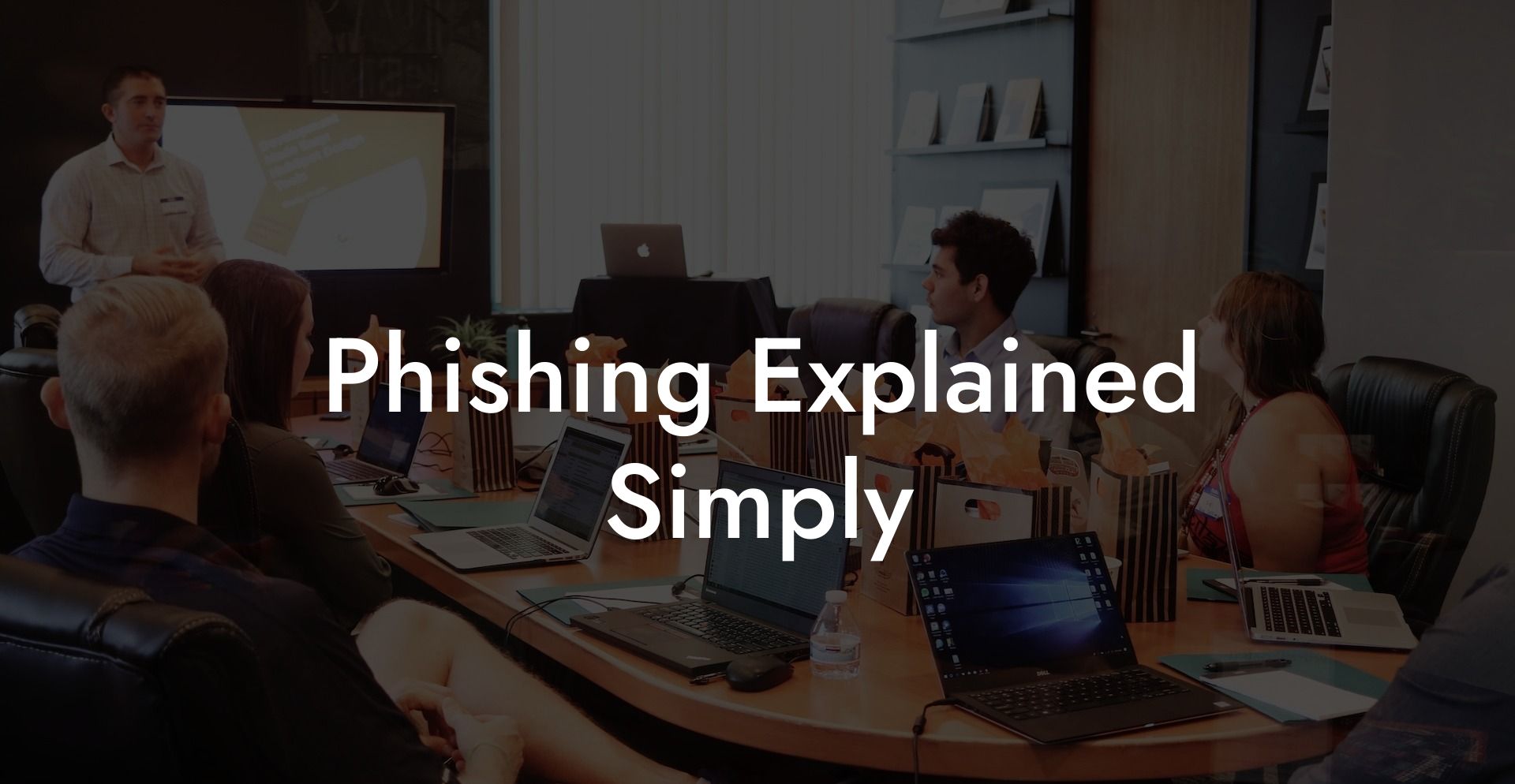Have you ever received a suspicious email or phone call that seemed too good to be true, or had a friend warn you against clicking on certain links? If so, you've probably encountered phishing in one form or another. As technology constantly evolves, so do the methods used by cybercriminals to target unsuspecting individuals, leaving them at risk of falling prey to scams that can lead to significant financial and emotional losses. This article offers a simple explanation of phishing, with a particular focus on voice phishing, and provides essential tips on how to protect yourself from these deceptive cyber tactics.
Phishing Explained Simply Table of Contents
What is Phishing?
Phishing is a type of cybercrime in which fraudsters pretend to be legitimate entities in order to deceive individuals into revealing sensitive information, such as personal data or login credentials. Phishing attacks can come in various forms, such as emails, text messages, or phone calls, and often aim to exploit the victim's trust in well-known organizations or brands. Voice phishing, also known as vishing, specifically refers to phishing attacks that occur over the phone.
How Does Voice Phishing Work?
Protect Your Data Today With a Secure Password Manager. Our Top Password Managers:
Voice phishing schemes usually involve fraudsters posing as representatives from financial institutions, government agencies, or tech support teams. They typically use robocalls, automated voice messages, or live agents to manipulate potential victims into disclosing confidential information, such as bank account details, credit card numbers, or Social Security numbers. Scammers might also employ social engineering tactics, playing on the victim's emotions or sense of urgency to create the illusion of legitimacy.
The perpetrators may deploy sophisticated techniques like phone number spoofing, which creates a false Caller ID display, to further enhance their credibility. Additionally, voice phishing attacks can be combined with other forms of phishing, like smishing (SMS phishing), to make them even more convincing and harder to detect.
Phishing Explained Simply Example
Imagine you receive a phone call from a well-known bank, with the caller claiming to be an account manager. They inform you of unusual transactions on your account and ask you to confirm your identity by providing your account number and PIN. The call appears legitimate, as it comes from the same number you have on file for the bank. However, you may be a victim of a voice phishing attack, where criminals have spoofed the bank's phone number in an attempt to gain access to your finances.
How to Protect Yourself from Voice Phishing Attacks
1. Stay vigilant: Be cautious when answering unknown calls, especially when the caller is requesting personal information. Legitimate organizations typically do not ask for sensitive data over the phone. If you receive a suspicious call, hang up and call back using the official number found on the company's website or your account statements.
2. Verify contact details: Even if a call appears to come from a legitimate organization, take the time to verify the contact information provided by the caller. Scammers may use official-sounding phone numbers or names in an attempt to impersonate genuine businesses.
3. Do not provide sensitive information: Always refrain from sharing personal details over the phone, especially if you did not initiate the call. If in doubt, end the call and report the incident to your bank or the organization being impersonated.
4. Enable call protection features: Utilize call-protection apps, as well as features provided by your phone service provider, to help identify and block known spam and phishing numbers.
5. Educate and update: Stay informed about common voice phishing tactics and up-to-date on the latest scams. Knowledge is power when it comes to protecting yourself from deceptive cybercriminals.
Phishing, and especially voice phishing, is a growing concern in the digital age. It's crucial to be aware of the dangers and take proactive steps to safeguard your personal information. By following the tips and precautions outlined above, you can significantly reduce your risk of falling victim to these attacks. Keep in mind that one of the best ways to stay protected is by sharing this knowledge with others, so feel free to share this article with friends, family, and colleagues. Don't forget to explore our other guides on Voice Phishing for more information on cybersecurity and best practices.
Protect Your Data Today With a Secure Password Manager. Our Top Password Managers:















